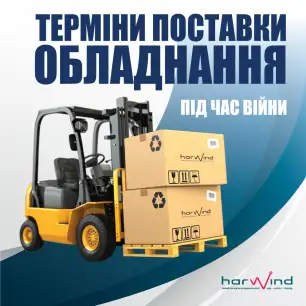BIS - brain monitoring
21 July 2023During general anaesthesia, it is already commonplace to
monitoring of saturation, blood pressure, ECG, temperature, etc. But also
new types of monitoring are also emerging. One of them is brain monitoring.
The brain is "no worse" or "no more important" than the heart. The brain
also needs monitoring of what happens to it under the influence of general
anaesthetics. After all, the main effect (application point) of anaesthetics is not the heart, not
or blood vessels, but the brain. Standard dosages of drugs are often
unacceptable for each individual case, and the dosage needs to be
individualisation through brain monitoring - monitoring the depth of
of anaesthesia.
One of the oldest studies in anaesthesiology were aimed at studying senile dementia and cognitive impairment after general anaesthesia. [1,2] At It is now an axiom that general anaesthesia is a risk for postoperative cognitive impairment (eg delirium), especially in the elderly.
Probably one of the most unpleasant complications for a patient from a planned general anaesthesia is waking up during anaesthesia. A whole national audit project in the UK, NAP5, was even dedicated to this topic. NAP5 in the UK [6]. The estimated incidence of accidental awakenings during general anaesthesia was ~1:19 000. However, this frequency varies significantly in different settings. A wide range of patient experiences and a wide range of of psychological effects (from none to life-changing) have been studied. Long-term psychological effects were found in about half of the patients, who reported accidental awakening during general anaesthesia.
One of the methods for monitoring the depth of anaesthesia is pEEG (processed EEG), with the help of which modern monitors calculate indices, such as BIS. However, the sole use of indices, such as BIS, without anaesthetist's ability to read pEEG does not guarantee the exclusion of accidental awakening during anaesthesia, and often the indices do not work correctly with some drugs, such as ketamine, and it is still unclear how to use them in children and the elderly [3]. With the Mindray BIS module, you can display not only the numerical value of BIS, but also the pEEG curve, and analyse it, as recommended by the guidelines of the Association of Anaesthetists. [4]
With the help of constant analysis by the anaesthetist of the pEEG curve can be noticed during general anaesthesia, such complications from overdose of anaesthetics as Burst Suppression, periods of isoelectric activity on the pEEG, which alternate with sudden electrical activity. The presence of Burst Suppression may correlate with the onset of postoperative delirium. [5]
Guidelines of the most famous associations of anaesthetists
of the world recommend the mandatory use of pEEG in general total
intravenous anaesthesia with muscle relaxation, at the discretion of the patient during gas
anaesthesia. [4] However, most awakenings during general anaesthesia occur
during the transition from intravenous to gas management, for example
after tracheal intubation [6]. Therefore, the use of pEEG during gas anaesthesia is also
is also justified and appropriate. There are many factors that influence the change in
MAP for each patient. For example, factors that reduce MAC and, accordingly
the need for a dose of inhaled anaesthetic - patient's age, hypothermia, anaemia,
narcotic drugs, etc. Therefore, the selection and individualisation of anaesthesia exclusively by MAC
(percentage of gas anaesthetic on exhalation) is extremely subjective and requires
the use of pEEG in parallel.
So, what are the benefits of using pEEG during
general anaesthesia?
●
monitoring the "state"
of the brain of each individual patient
●
"visualisation" of anaesthesia
●
personalised anaesthesia
●
avoidance of burst suppression,
reducing the risk of postoperative cognitive impairment
●
better cognitive recovery after
general anaesthesia
●
minimising the risk of awakening
during general anaesthesia
- BD Bedford
Lancet 1955 Aug 6;269(6884):259-63
- N Kotekar
eat al Indian J Anaesth 2014 May-Jun; 58(3): 263-268
- Tirel O eat
al Br J Anaesthes 2008; 100:82-7
- Recommendations
for standards of monitoring during anaesthesia and recovery 2021.
Guideline from Association of Anaesthetists.
- Niti Pawar
et al Front Syst Neurosci 2021; 15: 767489
- 5th National
Audit Project of the Royal College of Anaesthetists and the Association of
Anaesthetists of Great Britain and Ireland.
-
![Article]() TIVA TCI (total intravenous anaesthesia with target-controlled infusion)20 June 2023TIVA TCI (total intravenous anaesthesia with target-controlled infusion) is a total intravenous anaesthesia using the method of targeted controlled infusion.
TIVA TCI (total intravenous anaesthesia with target-controlled infusion)20 June 2023TIVA TCI (total intravenous anaesthesia with target-controlled infusion) is a total intravenous anaesthesia using the method of targeted controlled infusion. -
![Article]() What factors affect the delivery time of medical equipment.06 June 2022"URGENT!" or, at least, "as soon as possible" - this is how expectations for the delivery of medical equipment to a hospital look like nowadays. Even in peacetime, many customers did not understand why they had to wait so long. Moreover, why they had to wait now. We decided to explain what objective factors determine the speed with which new equipment is delivered to hospitals
What factors affect the delivery time of medical equipment.06 June 2022"URGENT!" or, at least, "as soon as possible" - this is how expectations for the delivery of medical equipment to a hospital look like nowadays. Even in peacetime, many customers did not understand why they had to wait so long. Moreover, why they had to wait now. We decided to explain what objective factors determine the speed with which new equipment is delivered to hospitals



